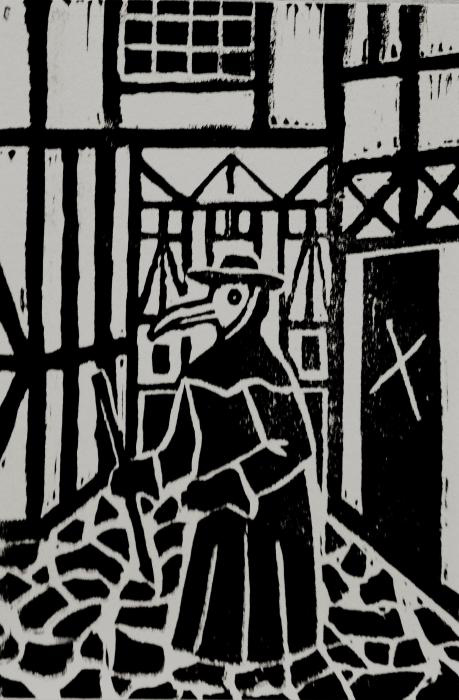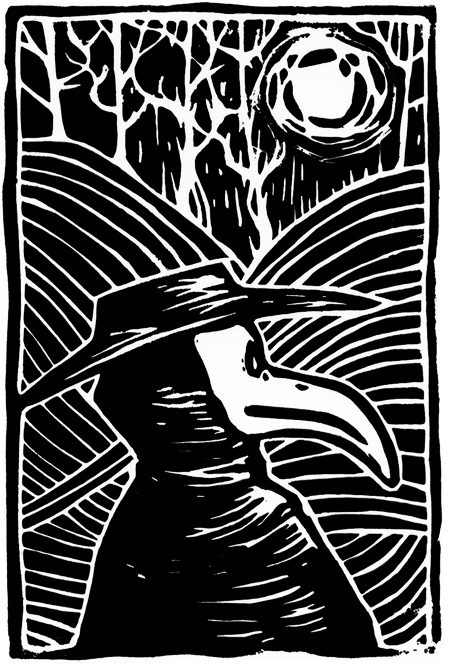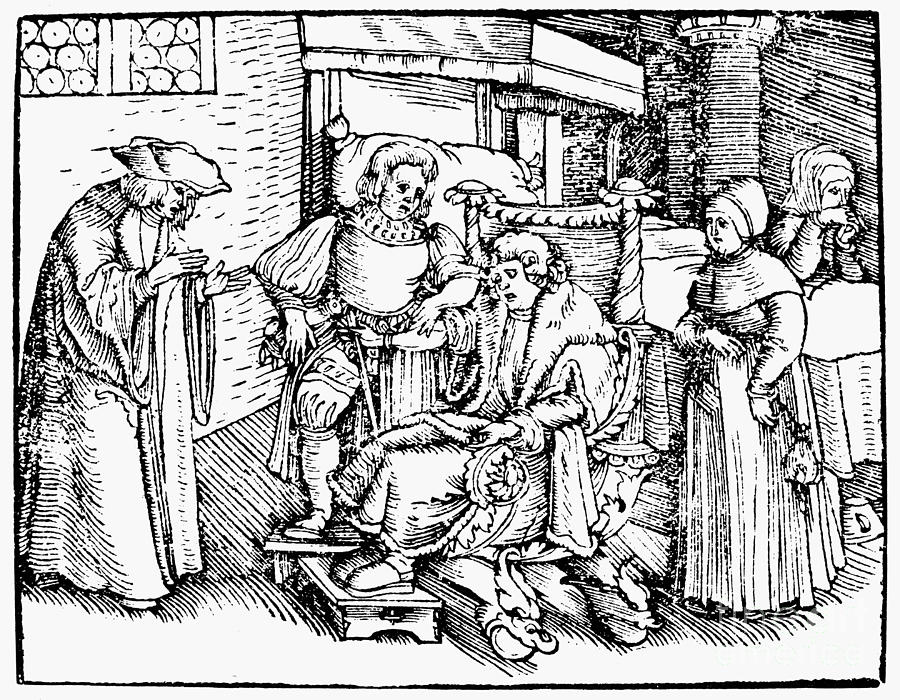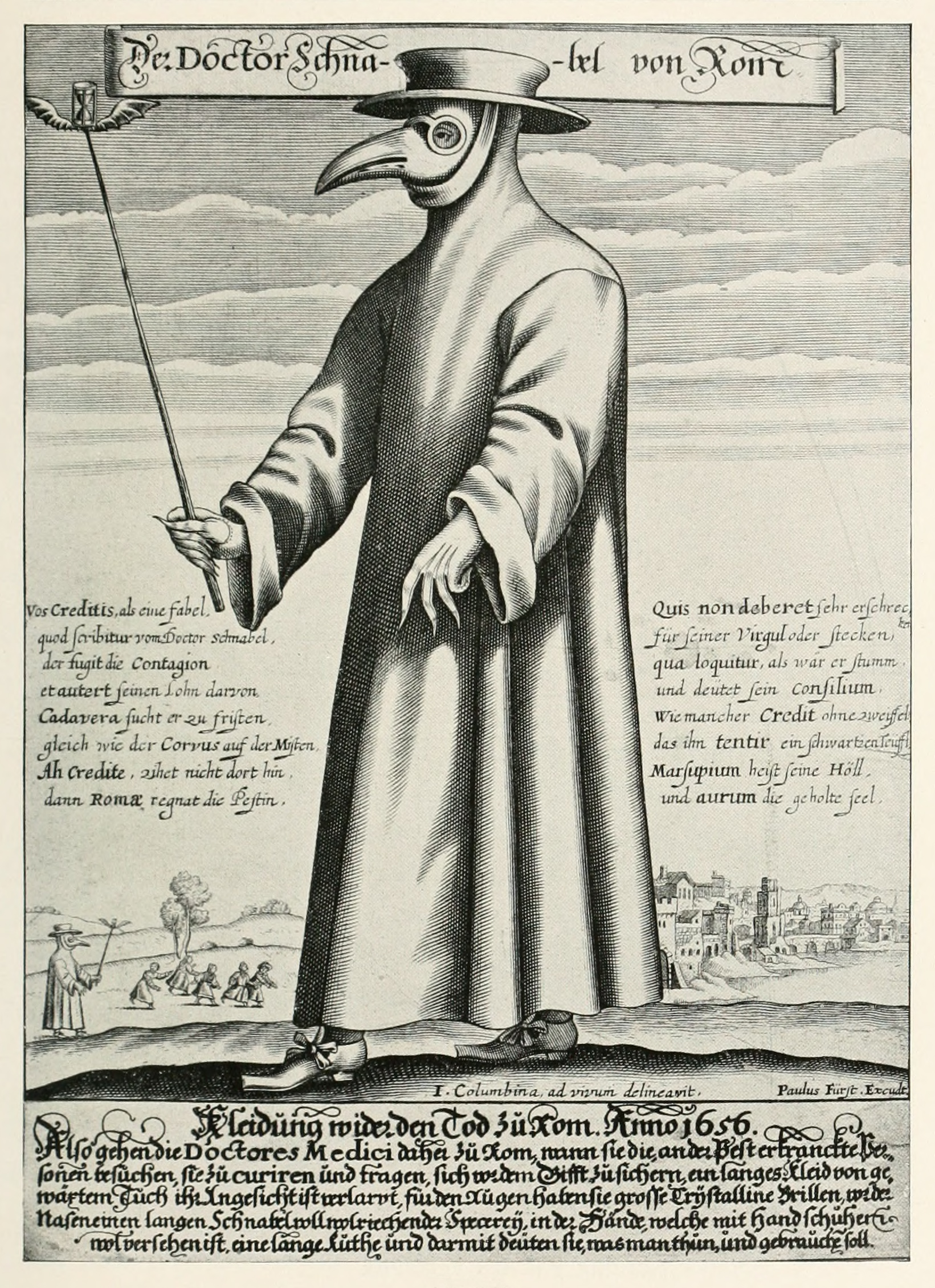The Plague Doctor
A plague doctor (Italian: medico della peste, Dutch: pestmeester, Spanish: medico de la peste negra, German: Pestarzt) was a special medical physician who treated those who had the plague. They were specifically hired by towns that had many plague victims in times of plague epidemics. Since the city was paying their salary, they treated everyone: both the rich and the poor. However, some plague doctors were known for charging patients and their families extra for special treatments and/or false cures. They were not normally professionally trained experienced physicians or surgeons, and often were second-rate doctors not able to otherwise run a successful medical business or young physicians trying to establish themselves.
Plague doctors by their covenant treated plague patients and were known as municipal or "community plague doctors", whereas "general practitioners" were separate doctors and both might be in the same European city or town at the same time. In France and the Netherlands plague doctors often lacked medical training and were referred to as "empirics". In one case a plague doctor had been a fruit salesman before his employment as a physician.
In the seventeenth and eighteenth centuries, some doctors wore a beak-like mask which was filled with aromatic items. The masks were designed to protect them from putrid air, which (according to the miasmatic theory of disease) was seen as the cause of infection. Thus:
The nose half a foot long, shaped like a beak, filled with perfume with only two holes, one on each side near the nostrils, but that can suffice to breathe and to carry along with the air one breathes the impression of the drugs enclosed further along in the beak. Under the coat we wear boots made in Moroccan leather (goat leather) from the front of the breeches in smooth skin that are attached to said boots and a short-sleeved blouse in smooth skin, the bottom of which is tucked into the breeches. The hat and gloves are also made of the same skin...with spectacles over the eyes.
The first epidemic of bubonic plague dates back to the mid 500s, known as the Plague of Justinian. The largest epidemic was the Black Death of Europe in the 14th century. In medieval times the large loss of people due to the bubonic plague in a town created an economic disaster. Community plague doctors were quite valuable and were given special privileges. For example, plague doctors were freely allowed to perform autopsies, which were otherwise generally forbidden in Medieval Europe, to research a cure for the plague.
In some cases, plague doctors were so valuable that when Barcelona dispatched two to Tortosa in 1650, outlaws captured them en route and demanded a ransom. The city of Barcelona paid for their release. The city of Orvieto hired Matteo fu Angelo in 1348 for 4 times the normal rate of a doctor of 50-florin per year. Pope Clement VI hired several extra plague doctors during the Black Death plague. They were to attend to the sick people of Avignon. Of eighteen doctors in Venice, only one was left by 1348: five had died of the plague, and twelve were missing and may have fled.
History
The first epidemic of bubonic plague dates back to the mid 500s, known as the Plague of Justinian. The largest epidemic was the Black Death of Europe in the 14th century. In medieval times the large loss of people due to the bubonic plague in a town created an economic disaster. Community plague doctors were quite valuable and were given special privileges. For example, plague doctors were freely allowed to perform autopsies, which were otherwise generally forbidden in Medieval Europe, to research a cure for the plague.
In some cases, plague doctors were so valuable that when Barcelona dispatched two to Tortosa in 1650, outlaws captured them en route and demanded a ransom. The city of Barcelona paid for their release. The city of Orvieto hired Matteo fu Angelo in 1348 for 4 times the normal rate of a doctor of 50-florin per year. Pope Clement VI hired several extra plague doctors during the Black Death plague. They were to attend to the sick people of Avignon. Of eighteen doctors in Venice, only one was left by 1348: five had died of the plague, and twelve were missing and may have fled.
Costume
Some plague doctors wore a special costume, although graphic sources show that plague doctors wore a variety of garments. The garments were invented by Charles de L'Orme in 1619; they were first used in Paris, but later spread to be used throughout Europe. The protective suit consisted of a heavy fabric overcoat that was waxed, a mask with glass eye openings and a cone nose shaped like a beak to hold scented substances and straw. Most plague doctors also wore a brim hat, which was typically worn by physicians during the time of the plague, to identify their position as a doctor.
Some of the scented materials were ambergris, Lemon Balm (Melissa officinalis)-mint (Mentha spicata L.) leaves, camphor, cloves, laudanum, myrrh, rose petals, storax. This was thought to protect the doctor from miasmatic bad air. The straw provided a filter for the "bad air". A wooden cane pointer was used to help examine the patient without having to touch them. It was also used as a means of repenting sins, as many believed that the plague was a punishment and would ask to be whipped to repent their sins. However, the cane was not used to beat away rats, contrary to what historians originally believed when first finding the canes.
Public Servants
Plague doctors served as public servants during times of epidemics starting with the Black Death of Europe in the fourteenth century. Their principal task, besides taking care of plague victims, was to record in public records the deaths due to the plague.
In certain European cities like Florence and Perugia plague doctors were requested to do autopsies to help determine the cause of death and how the plague played a role. Plague doctors became witnesses to numerous wills during times of plague epidemics. Plague doctors also gave advice to their patients about their conduct before death. This advice varied depending on the patient, and after the Middle Ages the nature of the relationship between doctor and patient was governed by an increasingly complex ethical code.
Methods
Plague doctors practiced bloodletting and other remedies such as putting frogs or leeches on the buboes to "rebalance the humors" as a normal routine. Plague doctors could not generally interact with the general public because of the nature of their business and the possibility of spreading the disease; they could also be subject to quarantine.
Notable Medieval Plague Doctors
A famous plague doctor who gave medical advice about preventive measures which could be taken against the plague was Nostradamus. Nostradamus' advice was the removal of infected corpses, getting fresh air, drinking clean water, and drinking a juice preparation of rose hips. In Traite des fardemens it shows in Part A Chapter VIII that Nostradamus also recommended not to bleed the patient.
The Italian city of Pavia, in 1479, contracted Giovanni de Ventura as a community plague doctor. The Irish physician, Niall O Glacain (c.1563?-1653) earned deep respect in Spain, France and Italy for his bravery in treating numerous victims of the plague. The French anatomist Ambroise Pare and Paracelsus were also famous medieval plague doctors.




